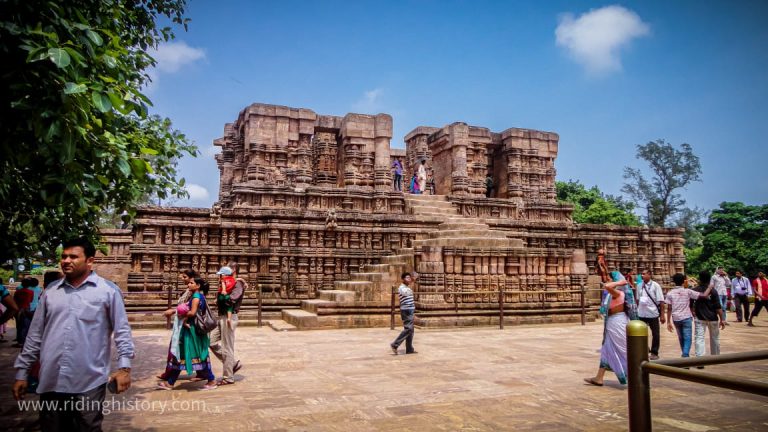Konark Sun Temple 2024 | Konark Sun Temple History | Konark Temple Timing | Konark Surya Mandir | Puri | Odisha | History | Entry Fee | Timing | Best Time To Visit Konark Sun Temple
Konark History | Konark Temple History
Konark is a small and ancient city located about 35 kilometres from Puri. Despite being a small city, Konark is one of the most prominent tourist destinations in India. The area around Konark has many ancient monuments and temples. To see whom tourists and archaeologists from different corners of the country and the world come to Konark.
The city of Konark, situated on the banks of the Chandrabhaga River flowing near the city, is famous all over the world mainly because of the ancient Sun Temple located here. All the ancient temples built around Konark are very huge and grand. You can guess the magnitude of the temples and monuments built in Konark with the fact that almost all the ancient temples and monuments built in Konark were invaded many times by foreign Mughal invaders.
But they never succeeded in completely breaking down these temples and monuments. Very fine workmanship has been used by the artisans of that time in the architecture and sculpture of all the ancient temples built here. Konark is near the Bay of Bengal, apart from just ancient temples and monuments, the beaches located near this city are also the centre of attraction for the tourists visiting here.
Like Puri, Konark’s beaches are also considered to be one of the cleanest beaches in India. The evidence of Konark being an ancient and religious place is found prominently in many mythological texts related to Hinduism such as Bhavishpurana, Varahapuran, Kapilsamhita, Sambapuran Brahmapurana etc. Apart from mythological texts, many historians have also mentioned Konark as an ancient city in their books.
Konark Sun Temple Konark
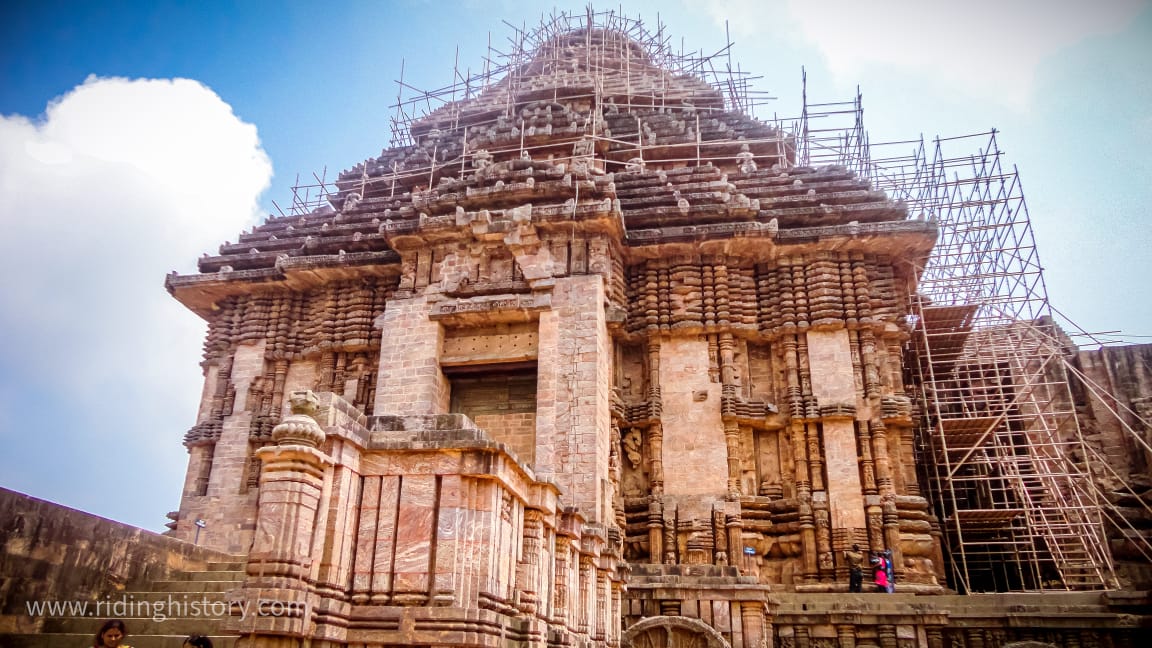
The world-famous Konark Sun Temple is the biggest centre of attraction for tourists in the city of Konark. This ancient temple is dedicated to Lord Surya. The ancient Konark Sun Temple was built in the 13th century by the ruler of the Ganga dynasty, Maharaja Narasimha Dev I, to conquer the Muslim invaders.
This temple was constructed as the chariot of the Sun God. According to mythological texts, there were 24 wheels in Lord Surya’s chariot and 07 horses were drawn to his chariot. The Konark Sun Temple was constructed according to the traditional Kalinga architecture of the time. Khondalit rocks have been used in the construction of the temple.
The main entrance of the temple has been constructed in such a way that the first rays of the sun enter through the main gate and reach the inner part of the temple. Much of the Konark Sun Temple has turned into ruins due to foreign invasions and various other reasons. The Konark Sun Temple was attacked by Muslim and Yavan forces in the 15th century destroyed much of the temple.
The Deity of Lord Surya installed in the sanctum sanctorum of the temple was moved to another place by the temple priests to protect it from foreign invasion. Despite this, this temple is still considered one of the best architectural buildings in India. The main temple’s sanctum sanctorum has been filled with mud to keep it from falling.
Two huge lions have been constructed to guard the temple at the entrance of the main temple. To reach the main temple we have to climb some steps. The walls of the temple have very fine and intricate carvings. The sculptures on the walls of the temple depict the entire life of man in detail. The Sun Temple also has ruins of two smaller temples known as the Vaishnava Temple and the Maya Temple. 24 giant wheels have been built around the main temple.
All the wheels have been designed with very little workmanship. Thousands of fiery elephants, hunting scenes and military procession scenes are depicted on the top and bottom of these huge wheels. The walls of the temple are made of an extremely excellent class of idols, flowers, deities, animals, mythical animals and aquatic monsters are seen on these walls.
When the British ruled India, they used to use the main building of this temple as a navigation tower while travelling by sea. This temple was called the Black Pagoda due to the black stone used in the construction of the temple. Konark Sun is one of the most ancient and magnificent temples in India. At the UNESCO meeting held in 1984, Konark Sun Temple was conferred the title of UNESCO World Heritage.
Konark Sun Temple Timings
Konark Sun Temple is open for tourists from 09 am to 05 pm during the whole week. The entrance fee to the temple is charged Rs 40 / – for Indian tourists and Rs 600 / – for foreign tourists. A fee of Rs 200 / – has been fixed for the guide of Konark Sun Temple.
Konark Sun Temple Entry Fee
The entrance fee to the temple is charged Rs 40 / – for Indian tourists and Rs 600 / – for foreign tourists. A fee of Rs 200 / – has been fixed for the guide of Konark Sun Temple.
Konark Temple History

The world-famous Konark Sun Temple is famous for its craft history. Equally interesting are the mythological stories associated with the construction of this temple: –
Konark Temple History – Story 01
The story associated with the construction of the Konark Sun Temple can be heard most here. It is said that when the construction work of the Sun Temple was going on, then at that time a very big problem related to the construction of the peak of the main temple came before the artisans.
At that time, no artisan was able to solve the problem associated with the construction of the shikhara of the temple. At that time, the 12-year-old son of the chief artisan of the temple Dharmapada reached the summit of the temple and completed the construction work.
After the completion of the construction work, Dharmapada thought that this work done by him would insult the ability of all the artisans and the king would also be angry with them. Fearing the king’s displeasure, Dharmapada committed suicide by jumping from that summit after completing the construction of the summit.
Konark Temple History – Story 02
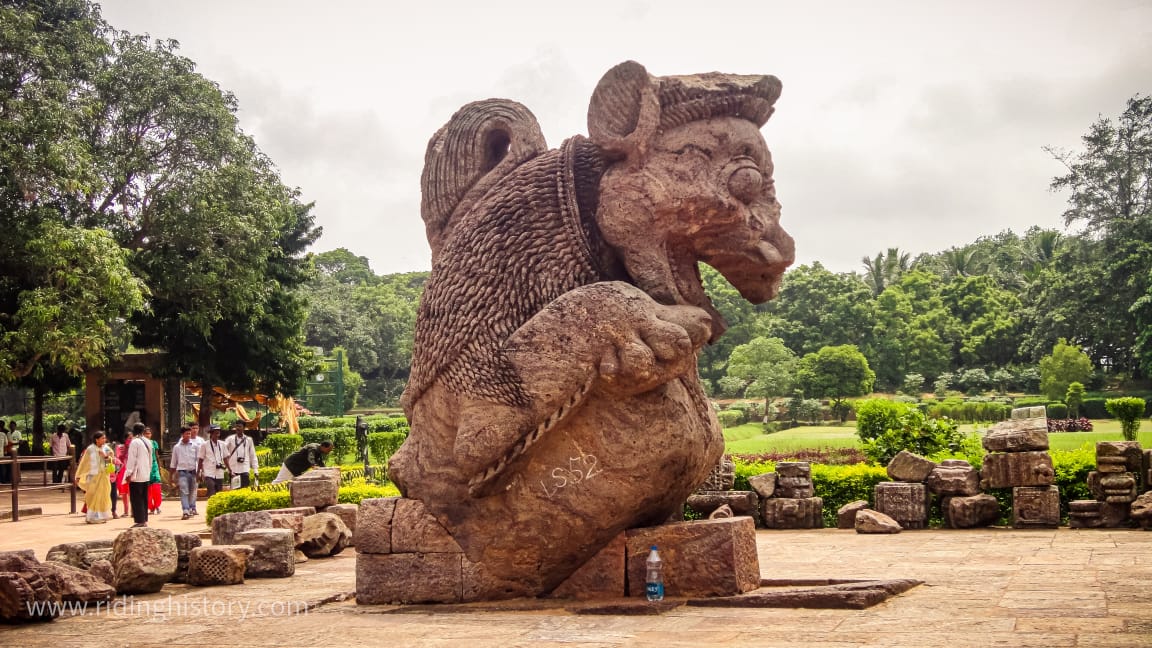
A legend associated with the Konark Sun Temple is even more famous. The local people have more unwavering faith in this story than it is famous. Locals and some historians believe that there was a magnet named Kumbhar Pathar on the summit of Konark Sun Temple which weighed around 53 tons.
The Kumbhar Pathar magnet was so powerful that ships and boats passing through the sea located near the temple would be drawn to the coast due to the impact of this magnet and collided with rocks.
Konark Museum Konark
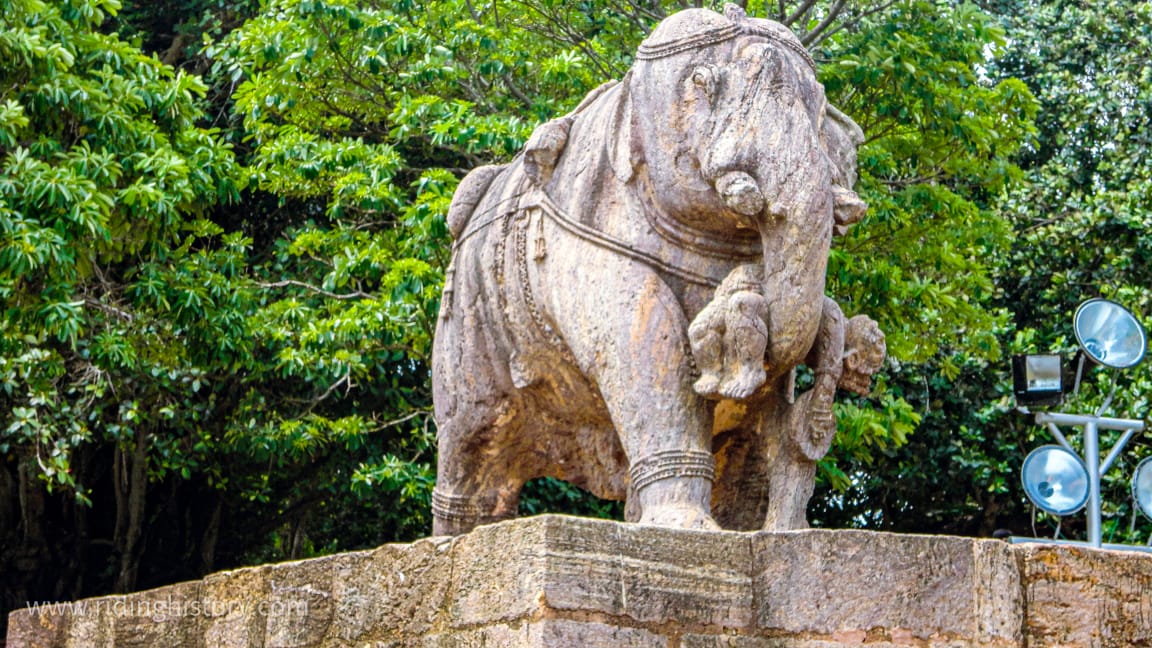
The Konark Museum was started by the Archaeological Survey of India in 1968 by collecting ancient and fragmented statues, manuscripts and paintings found in the Konark Sun Temple. Konark Museum is located just a short distance from the Konark Sun Temple.
The collection of ancient statues and manuscripts at the Konark Museum is considered to be one of the oldest collections in Odisha. The responsibility and maintenance of this museum are safe with the Archaeological Survey of India. Konark Museum is divided into four different galleries.
260 types of antiquities are displayed in these four galleries. Among the antiquities displayed in the museum are mainly sculptures of different deities brought from the Konark Sun Temple, ancient paintings and excerpts from manuscripts written at that time.
The first gallery of the museum has 62 antiquities. Which, a fragmented wheel made of crushed stone, a statue of the Sun God made of sandstone and different incarnations of Lord Vishnu are displayed. 108 antiquities are displayed in the second gallery of the museum.
The second gallery features parts of the main temple wall, heavenly nymphs, stone-carved vegetation and huge stone-crocodile heads. After these two galleries, in the third gallery, 45 different types of idols like the statue of Surya Narayana, the King with his army and Gaza Vyas are displayed. A total of 45 antique and huge sculptures are housed in the fourth and final gallery of the museum.
In the final gallery, the dancing figure displays the couple’s statue, some part of the Sun’s statue and the idol of a man tied to an elephant’s trunk. Konark Museum is one of the most prominent places for tourists, art lovers and historians to visit in Konark.
Konark Museum Timings
Konark Museum is open for tourists from 09 AM to 05 PM.
Konark Museum Entry Fee
Konark Museum remains closed for tourists on Friday of the week. The entry fee for tourists at Konark Museum has been fixed at Rs. 05 / -.
Ramchandi Temple Konark
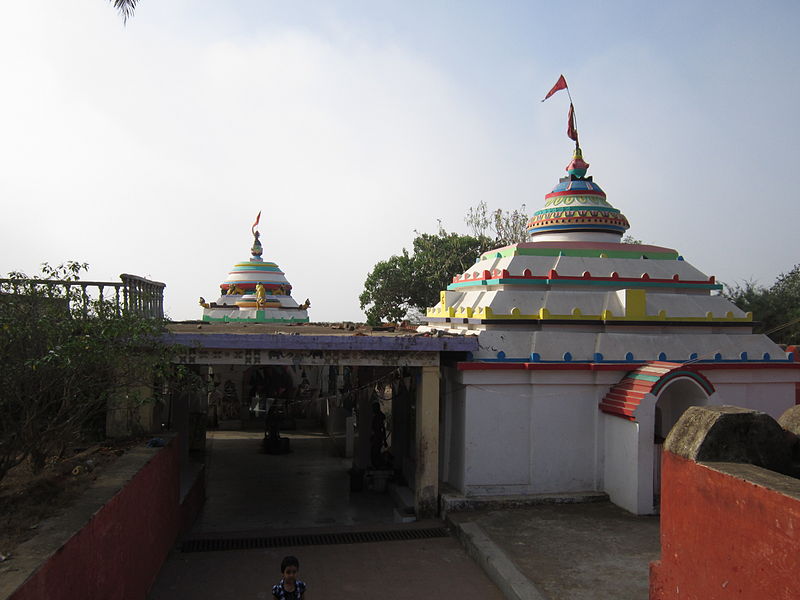
The ancient Ramchandi temple situated on the banks of the Kushbhadra River flowing 10 km from Konark is considered one of the major and popular pilgrimage sites in Konark. According to historical evidence, the Ramchandi temple of Konark is older than the Sun temple of Konark.
This ancient temple is considered to be one of the major Shaktipeeths of Odisha and besides, Mata Ramchandi is also worshipped as the presiding deity of Konark. Although the size of the Ramchandi temple is small, due to the trees of Caesarinus in the temple courtyard, this temple looks very beautiful.
The structures of Vimana and Jagmohan are built in the courtyard of the temple. The Ramchandi temple built in front of the Jagmohan structure is an open and flat-roofed temple. The main gate of the temple is north-facing, besides sandstone, brick and laterite have been used in the construction of the temple.
The idol of Mata Ramchandi is installed on the lotus flower in the temple’s home. The beach located near the temple is known as Ramchandi Beach. The scene of the Kushbhadra River merging into the Bay of Bengal from Ramchandi Beach seems very beautiful and adorable.
The soil of the Ramchandi beach is golden coloured, with clear and blue water on one side of the beach and huge palm trees on the other side making this place even more beautiful. Tourists can enjoy swimming, boating, sunbathing and boating on the Ramchandi beach.
Ramchandi Temple Konark Timings
The Ramchandi temple is open from 06 am to 06 pm for tourists and devotees.
Ramchandi Temple Konark Entry Fee
Entry Free.
Mythology
According to a legend associated with the Ramchandi temple, the Mughal commander Kalapahar reached to destroy the Ramchandi temple after destroying the Konark Sun Temple. At that time, Mata Ramchandi took the form of a maid to protect the temple.
When Kalapahar reached the Ramchandi temple, the maid asked her to wait till she brought water from the river to Mata Ramchandi. When the maid did not return after waiting for a long time, Kalapahad angrily entered the temple. After entering the temple, Kalapahar did not see the idol of Mata Ramchandi in the sanctum sanctorum of the temple.
Thereafter, Kalapahad followed the maid up to the Kushbhadra river. On reaching the bank of the river, Kalapahar found the idol of Mata Ramchandi floating in the middle of the river. Seeing all this, Kalapahar returned. After that Mata Ramchandi appeared in a dream to a priest and ordered him to get his temple built on the banks of Kushbhadra river.
Astaranga Beach Konark
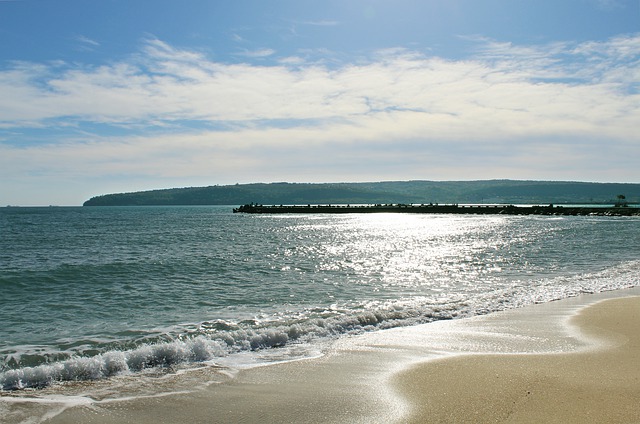
The Astaranga beach near the Devi River merging into the Bay of Bengal is one of the most beautiful and famous beaches in Konark. Konark city distance of Ashtanga Beach is 34 kilometres. The golden sand spread far and wide over the Astaranga beach and the scenic views of this place are extremely beautiful.
The view of the sunset from this beach is very enchanting. Tourists visiting this beach come here only to see the sunset. Astaranga Beach is one of the major fishing spots in Odisha. There is a small fish market near the beach. In this small market, there is a huge rush of vendors buying fish from fishermen in the morning.
The rush of boats and sailors on this beach in the morning makes this beach different from other beaches of Konark and Puri. Near the Astaranga beach is the famous temple of Pir Jahania.
Astranga Beach Puri Konark Timings
Any time of the day.
Astranga Beach Puri Konark Entry Fee
Free Entry.
Maa Mangala Temple Konark
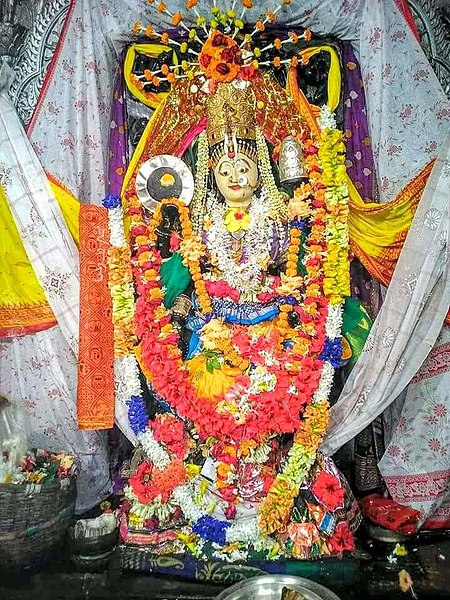
The ancient Mangala temple at Kakatpur, located about 21 km from Konark, is one of the major Shaktipeeths in Odisha. Residents also call the ancient Mangala temple “Bata Mangala Temple” and “Sarba Mangala Temple”. The Mangala temple was built during the 15th century. This temple is built in the most popular Kalinga architecture of that time.
Mangala Temple is considered to be a major pilgrimage site for the followers of Shakti Panth. In the inner part of the temple is a bed made of solid stone. It is said about this bed that Ma Mangala Devi rests on this stone bed after circling the entire universe. An interesting story related to the construction of the temple is very popular among the residents here.
According to mythological beliefs, the Goddess Mangala of this temple hid at the bottom of the Prachi River flowing at this place. At one time a local sailor was repeatedly unable to get his boat across the river. Then after some time, Maa Mangala appeared in the dream and ordered him to take his idol out of the water and install his idol in Mangalapur village.
According to Maa Mangala, the sailor took out the idol of Maa Mangala Devi from the waters of the Prachi River and got the temple of Maa Mangla constructed in Mangalapur village. After some time, the sailor saw in the river Prachi that he had removed the Deity of “Maa Mangala Devi” from the place in the river. At the same place, a crow is diving in the water but that crow is not coming out again. For this reason, this place came to be known as Kakatpur.
Maa Mangala Temple and Sri Jagannath Temple These two ancient temples are linked together due to the Navakalebara festival celebrated every year in Odisha. Navakalebara festival means the renewal of deities. During this festival, old idols of the deities of the Jagannath temple are buried in the ground. And then new idols of the three deities are created from the sacred wood.
The new and sacred wood is also called “Daru Brahma”. Following the ancient tradition associated with the construction of new idols in the Jagannath temple, the priests of the Jagannath temple come to the Maa Mangala temple to seek help from Ma Mangala to find the sacred wood used for the construction of new idols.
The priest of Jagannath temple sleeps in front of the idol of the Goddess in Mangala temple and as soon as the priest reaches deep sleep, Maa Mangala comes in the dream of the priest and tells the exact location of the three sacred trees for the new idol of the three gods of Jagannath temple.
This ancient tradition associated with the construction of new idols of the three deities in the Jagannath temple has been followed for many years without any hindrance. Jhamu Yatra is also considered the most famous festival in Mangala temple along with Navakalebara Festival. Jhamu Yatra festival is celebrated every year on the first Tuesday of Vaishakh month according to the Hindu calendar.
During this festival, the devotees collect water from the Prachi River and pray to get blessings from Maa Mangala. During the Jhamu Yatra, devotees of the Goddess fill water in mud pots and walk on the coals burning barefoot so that all their wishes are fulfilled.
Thousands of devotees gather in the Maa Mangala temple during the Jhamu Yatra organized every year.
Maa Mangla Temple Konark Timings
Darshan is open for the devotees at the Maa Mangala temple from 09:30 am to 01:30 pm and from 04:30 pm to 07:30 pm.
Maa Mangla Temple Konark Entry Fee
Free Entry.
Varahi Temple Konark
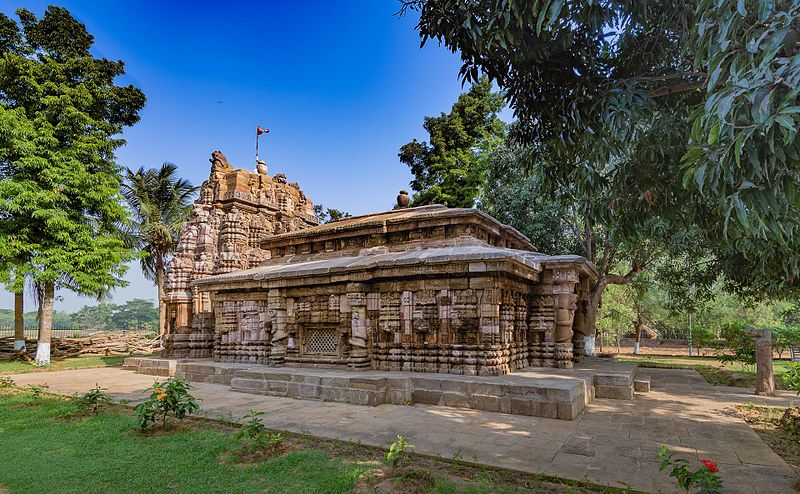
The distance from Konark to Varahi Temple is about 27 kilometres. This ancient temple is located in Chaurasi, a small village in Puri district. Apart from the Varahi temple, this ancient temple is also known as the Barahi temple. The Varahi Temple is also built on the banks of the Prachi River like the Ma Mangala Temple. In the 10th century, this temple was built by the then Somvanshi ruler in honour of Goddess Varahi.
The local people of Chaurasi village also know the temple goddess Varahi as Matsya Varahi. The idol of Goddess Varahi is installed in Lalitasana posture on a plain platform in the temple’s home. The right foot of the goddess Varahi is placed on the head of a demon named Mahisasura (buffalo’s head) and the goddess has fish in her right hand and a bowl in her left hand.
Fish is offered daily as an offering to Goddess Varahi. The walls of the Varahi temple near the Prachi River have been carved very finely by the artisans. Sandstones have been used for temple construction.
On the outer walls of the temple, many mythological events of India are engraved in a very beautiful way like the slaughter of a gold deer by Lord Rama, piercing seven palm trees with the same arrow by Lord Rama, abducting Sita, building a bridge over the sea.
Apart from this, there are statues of Nag Kanya on the pillars of the temple.
Varahi Temple Koarnk Timings
Varahi Temple is open for devotees and tourists from 07:00 AM to 10:00 AM and from 05:30 PM to 08:30 PM.
Varahi Temple Koarnk Entry Fee
Free Entry.
Kuruma Village Konark
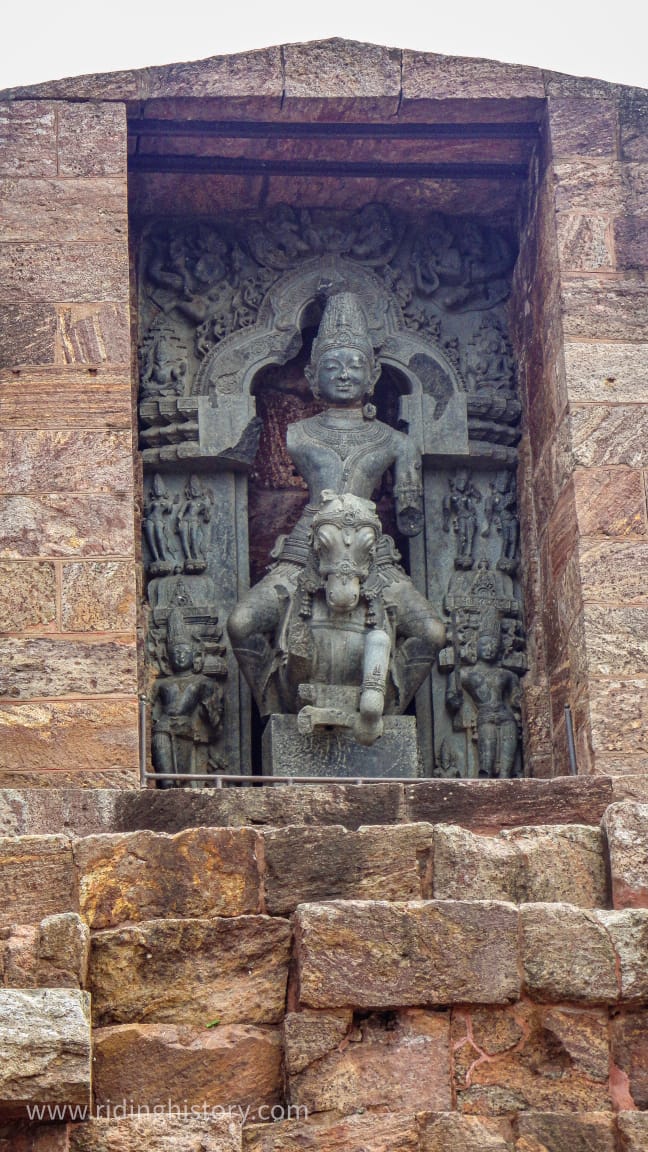
There is a small village named Kuruma located about 7 kilometres from Konark in Odisha. The place is famous as a tourist destination due to the statues and inscriptions of archaeological importance found in this village by the Archaeological Department of India.
Kuruma village is considered to be one of the most prominent places of archaeological importance in Odisha. This place is mentioned prominently in the Buddhist texts written by Ceylon and Ashoka. Besides, Chinese traveller Xuan Tsang has also mentioned Kuruma in his travelogue.
It is believed that the objects of archaeological importance found here must have been around the 8th to 9th century. The first to know about the archaeological importance of Kuruma was learned by Brijbandhu Das, a teacher at a school here. According to the information on this site by Brajbandhu Das, excavation work was started at this place between 1971 to 1975 by the Odisha State Archeology Department.
The statue of Lord Buddha was obtained near a pond in this village before starting the excavation at Kuruma. The statue of Lord Buddha found during the excavation was found in the Bhumisparsa posture in which he was caught with his right hand cross-legged and his left hand was placed on the left knee.
The head of the statue of Lord Buddha was wearing a beautiful crown and a very fine carving necklace. Apart from the idol of Lord Buddha, two ancient idols were also found near the pond. One of these two idols has been identified as ‘Heruka’, which the locals also consider as the form of ‘Dharma’ i.e. ‘Sun God’. Apart from this, the second idol is considered as the form of ‘Yama’.
This ancient Buddhist monastery in Kuruma is built in an open courtyard. The Buddhist monastery has three blocks (a total of 12 blocks) in all four directions. No one lives in this ancient monastery, but the ancient idols obtained from this monastery are kept in a small shed.
And these idols are worshipped within this shed. Tourists visiting Kuruma can also visit UGME school here. There is a room of Brajbandhu Das in the school, in which the stone inscriptions and ancient coins are kept safe during the excavation.
Konark Kurum Konark Timings
This ancient museum located in Kuruma can be visited by tourists from 10:00 am to 05:00 pm.
Konark Kurum Konark Timings
Free Entry.
Hotels in Konark – Where to stay in Konark
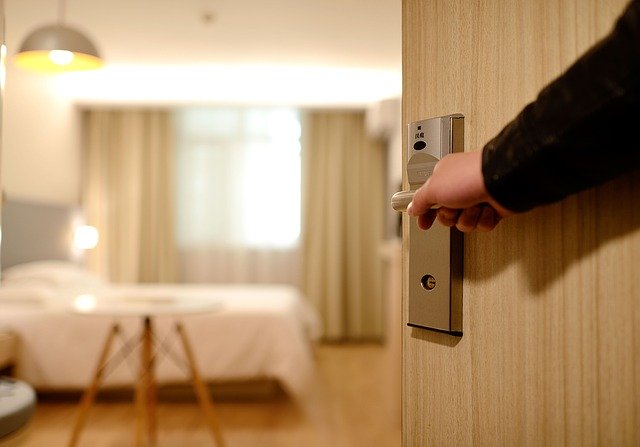
Due to being a famous tourist destination in India, there are many hotels and lodges in Konark. Many travel websites also provide hotel booking facilities in advance for Konark. If you want, you can come directly to Konark and book a hotel for yourself.
Apart from this, the distance from Konark to Puri is also not very much. If you are coming to Konark only to see the Konark Sun Temple, then you can book a hotel in Puri for yourself. Being a religious tourist place, you can also stay in Dharamshala beside the hotel in Puri.
How to reach Konark
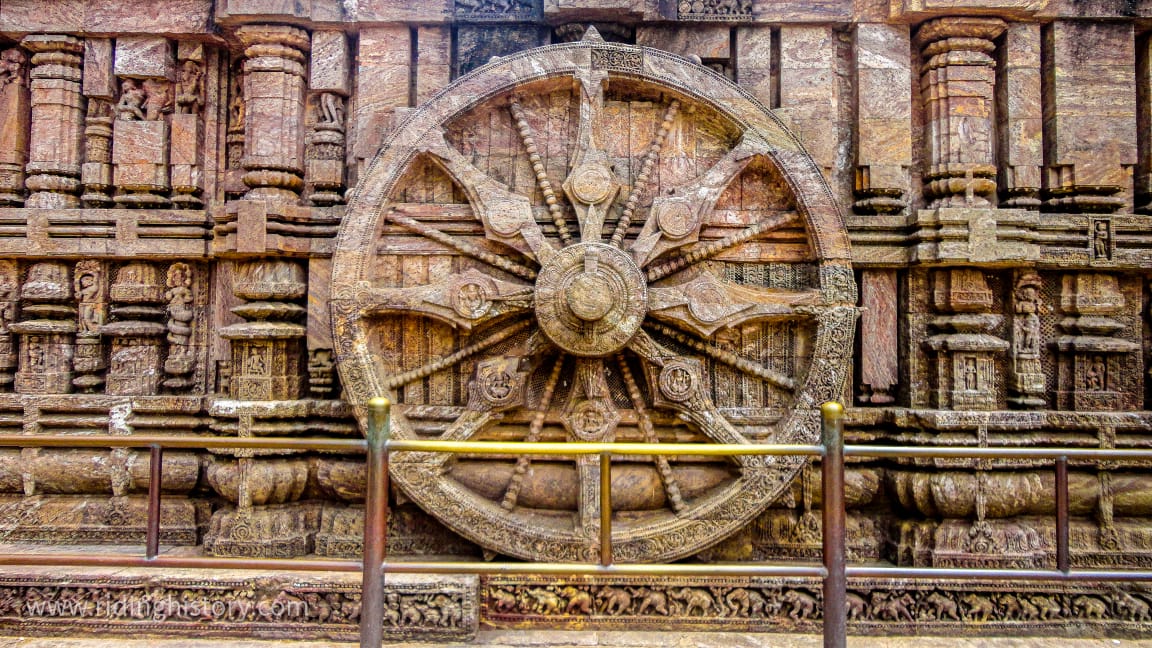
How to reach Konark By Flight
If you want to reach Konark by air then the nearest airport to Konark is Biju Patnaik Airport of Bhubaneswar. If you are visiting Konark from abroad, then Biju Patnaik Airport of Bhubaneswar is very well connected to all the international airports in India. Konark’s distance from Biju Patnaik Airport is just 63 kilometres. From Biju Patnaik Airport you can reach Konark directly by taxi.
How to reach Konark By Train
The distance of Konark from Puri railway station is 35 km. Regular bus and taxi services are available from Puri to Konark.
How to reach Konark By Road
Konark is also very well connected by road. There is a regular government bus service to Konark from Puri bus station. Apart from this, many private bus operators also provide bus services to Konark regularly.
If you do not want to go to Konark by bus, then taxi and cab services to Konark will also be available from the railway station and bus station of Puri. Before going to Konark, negotiate with the Taxi and cab operator.
If you are going to Konark in your vehicle then the road from Puri to Konark is one of the most beautiful roadways in India.
(If you have reached here in this article, then I have a small request from you to share your suggestions related to this article in the comment box below, and if you see any deficiency or any wrong information, then also Tell me. I keep posting information related to my travel on this website, if you like the information given by me, then you must subscribe to my website through your email, thank you)

